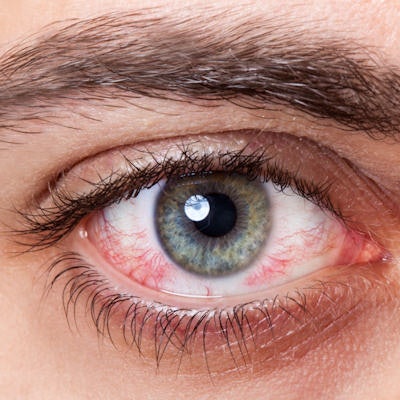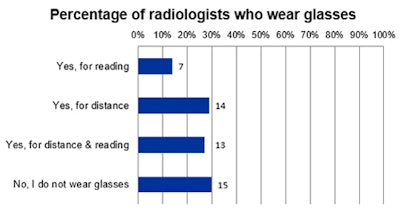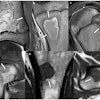
Radiologists are falling short when it comes to taking care of their own eyes, Irish researchers have found. Too few of them take adequate breaks, have regular eye tests, and wear protective goggles for fluoroscopy examinations.
"VDUs [visual display units] and PACS have placed a new, increased strain on the ocular health of radiologists," noted Dr. Stephen Power, a specialist registrar in radiology at Cork University Hospital and colleagues. "While quality control with regards to image acquisition and processing is well developed, the visual acuity and ocular health of radiologists is largely overlooked and underappreciated."
 Dr. Stephen Power.
Dr. Stephen Power.European Union (EU) directives require employers to provide regular eye and eyesight tests to those involved in the regular occupational use of VDUs, including PACS monitors, but a survey of Irish radiologists found that often these requirements are not met. Moreover, the prevalence of eye strain amongst Irish radiologists appears to be much higher than that previously quoted among U.S. radiologists.
Radiology requires the maintenance of a prolonged focus on objects close to the eyes, and in no other medical specialty is the visual acuity of the practitioner of such significance, Power and colleagues explained. Great emphasis tends to be placed on quality control issues in the acquisition, processing, and display of images, but the visual acuity of the radiologist tends to be ignored when discussing radiographic quality assurance.
"Good vision is critical to the radiologist's ability to make accurate interpretations for optimal patient care, without which the benefits of even the most state-of-the-art technology cannot be realized," they continued. "Whilst other professions, such as pilots, are required to undergo annual visual assessment, no such restriction is in place for radiologists."
X-ray vision or not?
The researchers sought to determine the impact of the regular use of VDUs and PACS monitors on radiologists. They designed and distributed a paper and internet-based survey to working Irish radiologists in 2016. The questions included demographic information, viewing method, work habits, exposure to fluoroscopy, and frequency of symptoms of eye strain.
Of the 49 radiologists who responded, 34 (69%) wore glasses, but only 47% of respondents had had an eye test in the past 12 months. Furthermore, 19% of the sample had not had an eye check in the past five years, despite EU directive 90/270/EEC mandating employers of those who are regular occupational VDU users to provide eye and eyesight tests at "regular intervals." The majority of radiologists felt their eyesight was stable, with only 18% (n = 9) reporting subjective deterioration.

A total of 90% (n = 44) of participants reported spending at least six hours a day at a PACS monitor, but only 10% (n = 5) said they take a break at recommended intervals. Taking a break at hourly intervals can significantly reduce the risk of eye strain, while prolonged daily use of PACS monitors is positively associated with the development of symptoms of eye strain, according to Power and colleagues.
There was a wide variation among the radiologists in terms of the time spent using fluoroscopy during the working week. Only 4% of radiologists said they always used lead glasses while utilizing fluoroscopy, despite the known association between ionizing radiation and the development of cataracts.
About 80% of respondents reported experiencing symptoms of eye strain during their working day. This is considerably higher than previously quoted, added the researchers, pointing out that Vertinsky and Forster reported a prevalence of eye strain among U.S. radiologists at 36% (American Journal of Roentgenology, February 2005, Vol. 184:2, pp. 681-686).
"Eye strain involves sensations of irritation to the eye itself, changes in vision, and associated symptoms such as headache," they wrote. "Eye dryness resulting from an increased exposed surface area of the cornea when focusing straight ahead (rather than down at written text) and a decreased blink rate due to mental concentration have also been implicated in the development of these symptoms."
Workstation design and display factors, including screen resolution and contrast, image refresh rates, screen flicker and glare, and working distances and angles can be contributory factors, they noted.
"Radiologists should be individually aware of the impact of their work practices on their ocular health," the authors concluded.
The questionnaire developed by the Cork team and the full results of the study presented at ECR 2017 in Vienna are available on the European Society of Radiology's EPOS site.



















